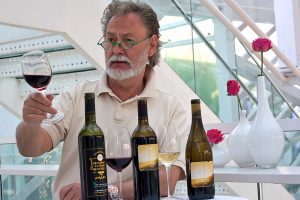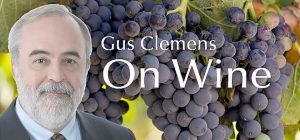Arcane knowledge is the bane of wine writers. While we fulminate over nuance differences between bâtonnage and pump-over, readers roll their eyes over esoteric words with obscure, oddly accented letters.
Reboot. Back to basics: Wine 101.
Wine is an alcoholic beverage. While wine can be made from any fruit, most wine is made from “wine grapes.” Wine grapes are different from table grapes. Wine grapes are sweeter, contain seeds, and have thicker skins than table gapes.
There are thousands of wine grape varieties. Most trace lineage to the species vitis vinifera. Each vine type is a variety. When wine is made using a particular variety, it is called varietal wine.
Many wines are blends of varieties, with each variety contributing characteristics. Cabernet sauvignon is softened and gains depth and complexity when blended with merlot, for instance. In many cases, varieties are fermented separately, then skilled palates determine what percentage of each achieves the optimal wine.

On the other hand, field blends are a mix of varieties that grow together and are vinified together. You get what you planted, not what wine geeks determine with beakers and daedal formulations.
Grapevines are woody perennials that produce an annual crop. Various factors—climate, soil, human interaction—affect how a wine tastes. The wine term for this myriad of influences is “terroir”—which is French for land, but in the context of wine, means every influence involved.
Vintage refers to harvest year. Non-vintage (NV) refers to wines that are a blend of several vintages. Champagne and many sparkling wines and sherries typically are NV. This allows winemakers to achieve consistency. In exceptional years, sparkling wine makers produce vintage efforts.
There are four basic types of wine. Sparkling wine retains CO2, making it bubbly. Still wine does not retain CO2. Fortified wines include added distilled wine spirits; typically to increase alcohol content and stop fermentation to produce a sweeter wine. Aromatized wines include non-grape additives to influence smell; vermouth is the best known.
You don’t need to know bewildering words and obscure techniques to enjoy wine. Sip it. If it pleases you, it is good wine for you, no matter fulminations of wine wordsmiths.
Tasting notes
• Domaine Bousquet Sparkling Brut Charmat Organic Rosé, Tupungato, Mendoza NV: Lively, fruit-forward charmat process sparkling. Superb value, wide distribution. $13 Link to my review
• C. L. Butaud Pa Pa Frenchy Red Wine, Texas, 2021: Grenache-based Texas wine. Simple, easy drinker. $18-22 Link to my review
Last round: I heard that Argentina is starting to get a little colder. In fact, it’s bordering on Chile. Wine time.

